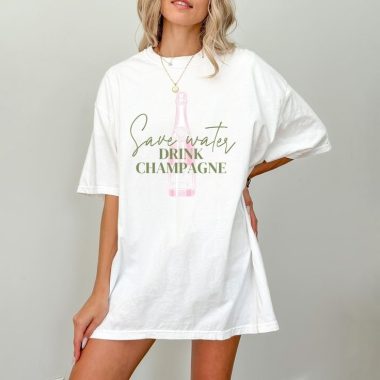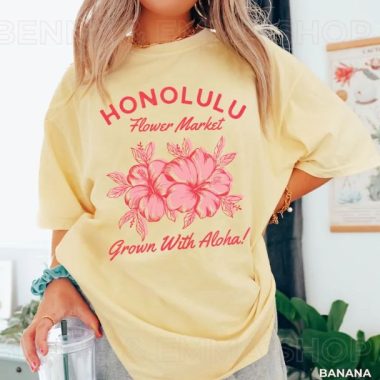Fashion, in its purest and most expansive form, is a language of human experience. It is a form of communication that does not require words, a mirror through which humanity reflects its values, fears, desires, contradictions, and dreams. Across centuries and continents, fashion has emerged not only as a way of covering the body but also as a form of shaping identity, defining beauty, challenging systems of power, and articulating the emotions we are often unable to speak. Its influence touches every corner of life, from the personal to the political, from the material to the spiritual. Fashion exists in what we wear, what we refuse to wear, what we admire, what we critique, and even what we preserve in archives and memories. The magnitude of fashion’s impact on culture, economics, identity, and environment makes it one of the most powerful forces in the human narrative.
To understand fashion fully, one must begin at its most primal origin—the instinct for expression and belonging. Before the invention of written language or structured religion, early humans adorned themselves with feathers, stones, animal bones, and body paint. These adornments were not created merely for beauty or function; they served as symbols of tribe, strength, fertility, spirituality, and survival. In this primitive context, fashion was both a psychological necessity and a communal signal. The act of decorating the body became one of the earliest forms of self-definition, enabling individuals to convey status, role, emotion, and belief long before they could articulate these concepts verbally.
As societies became more complex, fashion evolved into a visual system of hierarchy and order. In ancient Egypt, garments and jewelry indicated not only social class but also divine association. Pharaohs wore intricate linen robes and gold accessories to communicate power and proximity to the gods. In ancient India, clothing was connected to religion, caste, and region, with fabrics such as silk and cotton woven with symbolic patterns that carried centuries of meaning. In dynastic China, color and form were strictly regulated: only the emperor could wear yellow, while commoners were restricted to duller hues. The Japanese kimono, layered and tied with precision, evolved into an embodiment of ritual, seasonal change, and poetic philosophy. Each stitch, fabric, and fold was a quiet testament to a worldview that emphasized nature, impermanence, and harmony.
In medieval Europe, clothing was tightly bound to the feudal order. Sumptuary laws restricted peasants from dressing like the nobility, and specific garments were reserved for clergy, knights, and royalty. Dress became a performance of loyalty, class, and piety. Yet even within this rigid system, fashion found ways to express individuality. Colors, textures, tailoring, and accessories allowed for subtle gestures of rebellion, aspiration, or personal taste. As the Renaissance unfolded, art and intellect spilled into fashion. Italian and Flemish fabrics, infused with the opulence of gold thread and embroidery, revealed the flourishing of culture and luxury. Garments became moving canvases that celebrated anatomy, geometry, and divine proportion.
The Enlightenment, industrial revolution, and the birth of modern capitalism marked a turning point in fashion history. For the first time, the production and consumption of clothing expanded beyond aristocracy. Textile mills, the sewing machine, and chemical dyes allowed fashion to enter the lives of the growing middle class. With the rise of newspapers, illustrated fashion plates, and later photography, fashion trends could now travel faster, creating a new sense of temporal urgency around style. What was fashionable one year could become passé the next. This birth of modern fashion cycles set the stage for both the industry’s creativity and its future challenges.
By the early twentieth century, fashion had become an arena for artistic, political, and psychological experimentation. Designers like Paul Poiret and Coco Chanel challenged Victorian constraints by introducing silhouettes that emphasized freedom, mobility, and modernity. The flapper dress of the 1920s, with its dropped waist and free-flowing design, symbolized not just a new style but a radical cultural shift. Women were voting, working, smoking, and dancing. Their clothing reflected their liberation and defiance. Meanwhile, men’s fashion responded to the rise of corporate culture with tailored suits that projected control, efficiency, and masculinity. These seemingly simple garments carried deep cultural messages about gender, labor, and social expectations.
Fashion became even more politically charged during times of crisis. In wartime, fashion adapted to scarcity and sacrifice. Materials were rationed, hemlines shortened, and function overtook form. Yet even in austerity, fashion found resilience. Utility suits and military-inspired silhouettes entered the civilian wardrobe, blurring the line between duty and desire. Postwar fashion experienced a dramatic revival of luxury and femininity. Dior’s New Look, with its cinched waist and voluminous skirt, marked a return to extravagance but also sparked criticism for re-imposing restrictive ideals. Fashion, it seemed, was never neutral—it always reflected the battles being fought in society, whether for peace, equality, identity, or imagination.
As the decades progressed, fashion became a revolutionary space. The 1960s and 70s were defined by protest, counterculture, and experimentation. From the civil rights movement to anti-war demonstrations, from the Summer of Love to second-wave feminism, fashion responded with tie-dye shirts, denim jeans, and bohemian styles that rejected consumerism and hierarchy. The punk movement exploded with safety pins, ripped clothes, and DIY aesthetics, offering a fierce critique of the establishment. These were not just styles—they were ideologies worn on the skin. In the 1980s and 90s, fashion diversified further, influenced by subcultures such as hip-hop, rave, goth, and grunge. Each movement brought new textures, colors, and symbols, demonstrating that style could be an archive of resistance and imagination.
With the rise of globalization and the digital age, fashion entered a new phase of complexity. On the one hand, it became more inclusive and decentralized. Fashion weeks expanded to cities like São Paulo, Lagos, and Seoul. Designers began to incorporate Indigenous patterns, African prints, and Latin American textiles into their collections, sometimes with sensitivity, other times with appropriation. On the other hand, the dominance of fast fashion—fueled by global supply chains, social media, and consumer demand—led to mass overproduction, environmental degradation, and labor exploitation. Garments were no longer made to last, and the emotional connection between the wearer and their clothes began to erode.
Today, fashion sits at a crossroads. The climate crisis, global inequality, and mental health challenges have forced the industry to confront its contradictions. Sustainability is no longer optional—it is imperative. From recycled fabrics to biodegradable materials, from upcycled collections to zero-waste production, fashion is attempting to reinvent itself. Movements advocating for ethical labor, size inclusivity, racial representation, and gender diversity are gaining strength. Consumers are demanding transparency and authenticity. The rise of digital fashion—non-physical garments created for avatars and virtual platforms—raises philosophical questions about identity, ownership, and the future of human expression.
At the same time, fashion continues to be a source of deep personal meaning. It helps us grieve, celebrate, transition, and grow. The clothes we wear at weddings, funerals, graduations, or protests become symbols of moments that shape who we are. Fashion is memory—of childhood, of youth, of love, of change. It is imagination—of who we could be, who we want to become. It is community—uniting people through uniforms, styles, rituals, and traditions. And it is liberation—allowing individuals to rewrite the stories others tell about them.
Fashion’s enduring power lies in its dual nature. It is both ephemeral and eternal, commercial and emotional, global and deeply personal. It can reflect conformity or rebellion, status or humility, faith or irreverence. It moves at the pace of culture but remains rooted in timeless human desires: to be seen, to belong, to transform. As technology advances and societies shift, fashion will undoubtedly continue to change. Yet its core purpose will remain the same—to give form to the invisible, voice to the silent, and meaning to the ever-changing story of being human.
The future of fashion depends not only on designers and brands but also on wearers, thinkers, activists, and dreamers. Each choice—what we buy, what we wear, what we save, what we discard—contributes to a larger cultural narrative. In a world increasingly dominated by noise, speed, and spectacle, fashion offers a space for reflection, creativity, and care. It is a symphony composed of countless voices, traditions, and innovations, and it continues to evolve as long as people continue to imagine, express, and connect. Fashion is not the clothes themselves—it is what those clothes carry: history, hope, memory, identity, and the infinite potential of the human spirit



